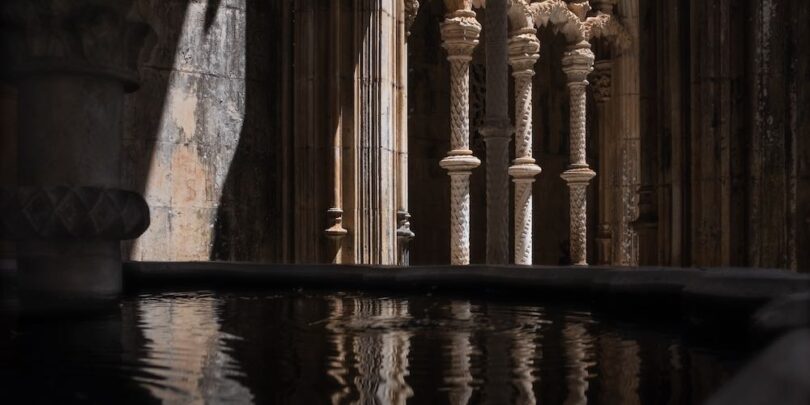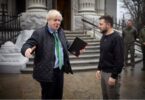Alex Taylor
The likeness of poetry to painting has been noted by such a wide variety of thinkers and artists, from Plato to Ezra Pound, that it seems there must be something essentially true about the analogy. The literary task of description and the pictorial task of composition, share the fundamental aim of revealing something to the viewer. Flannery O’Connor once said that she knew many fiction writers who also painted, “not because they’re any good at painting, but because it helps their writing. It forces them to look at things. Fiction writing is very seldom a matter of saying things; it is a matter of showing things.”
In this respect, Katy Ca-rl, whose first novel As Ea-rth Without Water (2021) h-as recently surfaced, is quite the painter herself—and not just because her novel foc-uses on two painters, but on account of the novel’s fine rendering of wounded liberty and healing freedom.
It’s been suggested by Caroline Gordon, an acclaimed mid-century novelist and literary critic, that there is no such thing as a novel of ideas, because novels are about action, about life. As Earth Without Water presents a vivid painting of lives in which ideas matter, not as abstract propositions, but as reality-shaping forms. The journey of two friends, former lovers, and one-time artistic rivals Angele and Dylan can help us see how the extent of our self-knowledge shapes our lives. The novel does not aim at a linear plot, but rather contains a series of Angele’s narrations about her past experiences as a marketing executive in Chicago, as a budding artist in New York and Rome, and as a friend in far-flung Kentucky, where Dylan has entered Our Lady of the Pines monastery, becoming Brother Thomas Augustine.
Though her episodic structure is more characteristically modern, Carl takes a great deal of inspiration in characterization from the medieval Divine Comedy of Dante Alighieri (another artist concerned with, in the words of a reviewer of the novel, “freedom, choice, and the creative life”). She imaginatively casts Dylan as a Dante misled by his own Beatrice (another fellow art student who becomes his public relations guru, then lover, and finally his jilted fiancée). After opening the novel with a nod to Dante’s Inferno (“Halfway up the rise of a dark steel forest”), Angele recounts her recent past, taking readers through a cinematic journey flush with flashbacks of those varied years, in which Carl deftly plies the mot juste as might an impressionist.
Indeed, her narrator mi-ght justly be called an imp-ressionist of the interior life. Angele brings her introspective vision to reveal to us memories as distinct as mornings from her Mississ-ippi childhood reading with her childhood friend Richard (remembered only briefly so as to sketch her path out of the South to the shining lights of the city that never sleeps) to golden afternoons with Dylan during their study abroad, that time when she felt most at home. The novel’s plot follows Angele’s recollections of the artistic and spiritual journey she shared with Dylan, but it is no straightforward künstlerroman; rather than provide us with a rendering of the maturation of her own vision, Angele tends to focus on Dylan, seeking not, as a Romantic artist might, to reveal herself, but rather to reveal her subject. Though Dylan tends to eclipse Angele’s character, the light of her countenance slips around the edges, such that we become acquainted with the daughter of an often-away alcoholic father, a sister to many sisters (Aman-da, Alexis, and Anna), who-se Aunt Rachel, a professor in New Orleans, rescued her and brought her to a place where her artistic gifts could flourish in the freedom opportunity provides.
Such freedom Dylan has had also, as his parents have provided him with a great deal of what might be called ‘privilege,’ in the form of e-xtensive art schooling from a young age. Their lack of careful attention to their son, however, allowed the sexual abuse he suffered at seventeen at the hands of his psychiatrist. The way in which abuse hinders the freedom of its victims recu-rs thematically throughout the novel, and we come to understand Dylan’s relational irony as a struggle to give himself fully to another, that is, to give without calculation. His entrance into the monastery—as well as his eventual departure, and Angele’s eventual entr-ance into a convent implied in the novel’s conclusion—stems from the deeply-rooted desire to be free for a gift-of-self. “All this time, neither of us has been able to give the other any permanent gift, so much too concerned with what we lac-ked,” Angele muses before leaving Our Lady of the Pines, contemplating a crucifix as she writes. Both she and Dylan have found this the only solution to the problem of pain.
It is not without reason that we use the phrase ‘artistic license’ to castigate the director who strays too far from her source text in a book-to-film adaptation, but Carl’s imaginative use of analogy and allusion reveals rather the freedom of the Christian artist who beholds what nineteenth-century poet Gerard Manley Hopkins called “the dearest freshness deep down things.” Indeed, the beauty of Carl’s analogies provoke the reader to sensation. Early on in the novel, we hear the sound of canvas ripping as Angele describes her employ of a razor on her own art: “the blade snapped rows of taut crossed threads with a sound like a zipper.” Analogies like this one bring us into the physical, everyday realities being described, providing a counterweight to the loftiness of Carl’s elaborate allusions, subtle and overt—whether to Catholic saints like Thomas Aquinas and Thérèse of Lisieux or to visual artists from Fra Angelico to Ruskin.
Even the more obscure of her allusions, however, do not present themselves as puzzles, confounding the reader, but rather as pieces of the multiform texture of Angele’s search for beauty, truth, and goodness. In this, Carl’s artistry is unlike the pastiche of high modernist works like T.S. Eliot’s The Waste Land, which seeks to unsettle readers with the weight of the Western intellectual tradition. Rather, it is through the dialogue of her characters that Carl’s novel should unsettle us, showing us the distinction between contemporary liberty and true freedom.
A brief survey of the distinction between liberty and license helps us to see how the concern plays out in Carl’s novel, for the meaning of freedom is embedded in our American political tradition. The distinction between liberty and license (or licentiousness) was of fundamental importance to the American founders, and crucial if we are to understand how they might uph-old the First Amendment on the one hand, and the prudence of obscenity laws on the other. Consider Noah Webster, who was a student during the War for Independence, now known primarily for the dictionaries which bear his name. In An American Dictionary of the English Language, We-bster offers definitions of li-berty and license which cl-early set the two at odds. W-hile liberty is “the state of a freeman; ability to do as on-e pleases, freedom from res-traint,” or even simply “the power of choice,” license Webster names as “excess of liberty; exorbitant freedom; freedom abused, or u-sed in contempt of law or d-ecorum,” citing for authority John Milton: “License th-ey mean when they cry liberty.”
In our time, unfortunately, the word ‘liberty’ has in many minds lost the orientation towards goodness th-at had been understood as a necessary part of its virtue. Its name has been abused to support evils that Washing-ton, Adams, and Hamilton would have understood as opposed to true freedom, s-uch as abortion (“reproductive liberty”), pornography (“liberty of expression”), and even the promotion of Satanism (“religious liberty”). Taking this linguistic state of affairs into account in her novel, Carl suggests through her characters that ‘liberty’ without orientation can only be a condition for a more robust freedom. Lib-erty as mere choice is a condition wherein, as Dylan notes in a final confession to Angele, we can enslave ourselves to vice and make ourselves “not free to do the best things [we are] capable of.” Freedom in Angele’s e-yes is not to allow oneself to be used in order to feel a s-ense of belonging, but the a-bility to sacrifice oneself in a noble project, almost eff-ortlessly. This understanding of freedom should rem-ind the student of the history of America’s political founding. Such a desire for nobility and acceptance of the self-sacrifice required in such a task was jotted out at the founding of the United States, when the Founders “with a firm reliance on the protection of Divine Provi-dence,” “mutually pledge-[d] to each other [their] Lives, [their] Fortunes, and [their] sacred Honor.”
Like the first canticle of Dante’s Comedy, Carl’s novel begins with a descent into a world whose liberty is wounded, here, contemporary America—its inhabitants, by and large, do not realize that their souls should be confirmed in self-control, their liberty finding its purpose in the pursuit of the natural law which points the way towards happiness. We witness this universal woundedness in the lives of her characters, which show unique contests playing out between good and evil. “The front line” of these battles, as Carl notes, citing Aleksandr Solzhenitsyn in her Author’s Note, “runs through every human heart without exception.”
There is no easy paradise in America today. The best public policy will not heal a wounded humanity, nor will any political campaign, ne-cessary though they may be for righting the ship of the republic. However, Carl’s novel, in its presentation of Angele and Dylan’s aspiration for a healing brought about by freedom, should lead us to hope in the true light that even now shines amid the cultural darkness in the West. By presenting the longing of souls for the beauty of a freedom fulfilled, paradoxically, only by embracing the limits inherent in human life, such art helps to portray what, as Pope John Paul II said, the words of Christ for our age contained: “the requirement of an honest relationship with regard to truth as a condition for authentic freedom, and the warning to avoid every kind of illusory freedom, every superficial unilateral freedom, every freedom that fails to enter into the whole truth about man and the world.”







